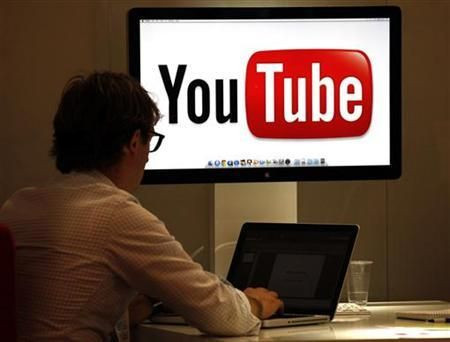YouTube Still Hasn’t Replaced Television. And Here’s Why It Won’t

A year into Google Inc.’s (Nasdaq: GOOG) ambitious $100 million investment in original programming for YouTube, the online giant has filled dozens of niches, with 100 professionally produced video channels for everything from football fanatics to Beliebers.
And yet, amid the din of new content, which now dominates YouTube’s home page, the website has yet to produce a definable mainstream hit. Views aside, the pop-culture cache of all 100 YouTube channels combined scarcely adds up to a single episode of “Homeland" or one Monday Night Football game.
Now, Google is cutting off funding to more than half of those channels as it steps up its efforts to transform YouTube from a low-rent home for cute cat videos into a Hollywood power player for the attention-deficit set. AdAge’s Michael Learmonth reports that Google has announced an extension of its original-content programming, but only about 30 to 40 percent of its channels are receiving new funding. The remaining channels will not necessarily be canceled, but YouTube will no longer put up the money to keep them going. (The annoucement comes a month after Google announced it is expanding the program in Europe.)
It’s a more measured approach than the company took last year, when it poured $100 million into 100 different channels of programming, including celebrity-backed efforts by Madonna, Shaquille O’Neal, Amy Poehler and Ashton Kutcher. Google has not said which channels it would continue to fund, nor did it say how much money it is spending on its second round of programming. But according to AdAge, the company seems to have a better handle on what type of original content works. Humor and music channels, for instance, tend to do well, while celebrity names attached to channels aren’t necessarily enough to attract viewers.
In an interview with the Associated Press, Google execs said the goal with the new push is the same as it was last year: to change people’s perception of YouTube. “Up until now, the primary noun on YouTube has been video,” Shishir Mehrotra, YouTube’s director of product management, told AP. “We’re gradually shifting the site so the primary noun on the site is the channel, and you tune into the channels that you care about.”
Google touts the success of its original programming by pointing to the fact that its top 33 channels have garnered more than 100,000 subscribers, which increases the likelihood of return visits. But while YouTube has enjoyed some decided mass-media triumphs -- most notably Felix Baumgartner’s death-defying 24-mile-high leap, which was watched by a record 8 million viewers -- it has not exactly eked its way from the bottom rung of the media totem pole. James L. McQuivey, who studies digital video and television at the research company Forrester, told the New York Times’ Claire Cain Miller that, although advertisers are keeping an eye on YouTube, “they’re not about to risk giving up a pilot on NBC in order to do a new YouTube channel.”
Google has turned industries upside-down with its ubiquitous advertising services, but in revamping YouTube as an ambitious producer of content, it has not ushered in a new era of must-see Internet TV. So why has the Web’s most successful company failed to usurp an appliance that has been in our living rooms since the 1950s?
For one thing, the perception that YouTube is working to change is not as simple as revamping its front page. For all its high-gloss original content, YouTube still comes to the majority of our screens through search-engine queries and sharing on social networks. Once ten or more of your friends share the same YouTube video of a dog chasing its tail, your brain starts to make strong associations.
However, the main reason TV is still king may simply come down to eyeballs. According to Google, YouTube’s top 25 channels now average about a million viewers per week. The aforementioned “Homeland” attracts almost twice that amount in a single night. Perhaps more important, the Emmy-winning Showtime series gives “SNL” something to spoof. When Anne Hathaway mocks the Bad Teeth Channel on live television, YouTube TV will know it has arrived.
© Copyright IBTimes 2024. All rights reserved.






















